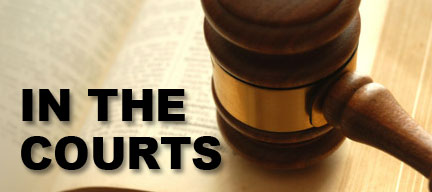 |
|
Ben B. Rubinowitz |
The National Institute for Trial Advocacy will hold its Flagship Trial Techniques Program from July 25 to August 2, 2012 at the NITA Educational Center in Boulder Colorado. The National Program has been considered by many to be the best course they have ever taken and an unparalleled learning experience. “There is no better program for lawyers interested in honing and polishing their Trial skills than this one,” said Ben Rubinowitz, the National Program Director. “Our faculty is superb and every participant will learn the most up to date techniques in all trial skills including Jury Selection, Opening Statements, Direct and Cross Examination, Examination of Experts and Summation. Communication Experts will work with each participant individually to sharpen their oral advocacy abilities. What makes this program far better than other Continuing Legal Education Programs throughout the country is that each student will receive detailed instruction, individualized attention and video review on a daily basis. In addition, each student will have the opportunity to put their newly learned skills to work by having the opportunity to try two cases — a bench trial and a jury trial — and even more importantly, have the opportunity to watch their jury deliberate following trial. We are even bringing in Focus Group Experts to help out. If you want to improve your skills, take this course — This program will be the best ever.”
For more information about this program contact NITA
The Method
The NITA Learning-by-Doing method is the most effective way to practice, learn and retain the advocacy skills used throughout one’s legal career.
The Faculty
Comprised of lawyers, judges, professors and consultants from around the nation, the NITA faculty brings a wealth of experience and knowledge to every program and provides participants immediate feedback on their performances.
The Opportunity
In addition to undoubtedly being a better lawyer after completing the program, participants will be learning alongside potential colleagues and referral sources from across the country.
The National Program
Brought to you in an entirely new format, the 2012 National Session is like never before. Though the program will still take place in beautiful Boulder, CO and continues to bring in the very best and brightest NITA faculty members from across the country, the programming within this year’s National Session is groundbreaking.
For the first time the National Session will be led by Program Director Ben Rubinowitz, prominent New York City attorney, NITA Trustee and member of the Inner Circle of Advocates. In addition to the group of highly experienced practitioners, professors and judges being brought in to teach Rubinowitz has also assembled a team of NITA’s communications experts Marsha Hunter and Brian Johnson of Johnson Hunter Inc. and jury selection/focus group experts Mary Ryan and Bryan LeRoy of the Portia Group.
Throughout the program you will use NITA’s learning-by-doing method to practice and perfect your skills in the challenging arts of trial advocacy and persuasion. In a simulated trial setting you will be performing:
• Opening statements and closing arguments
• Direct and cross examinations of fact and expert witnesses
• Impeachment
• Voir Dire
• Oral advocacy skills
To signify the end of the first “half” of the program you will conduct a bench trial. In the days immediately following the bench trial you will go through intensive workshops on jury selection, including the use of focus groups. Before your presentations you will have a chance to see demonstrations of experienced lawyers conducting focus groups and performing open jury selection. These workshops will also be videoed giving you the opportunity for video review with faculty. Other than NITA’s Advanced Trial Program this is the only place these courtroom simulations are offered.
The program finishes with you performing full jury trial, once as counsel and once as a witness. After the trial you’ll get to watch real jurors deliberate via closed circuit TV, and upon hearing their verdict, have a chance to ask them questions and hear their feedback.
 New York Personal Injury Attorneys Blog
New York Personal Injury Attorneys Blog




